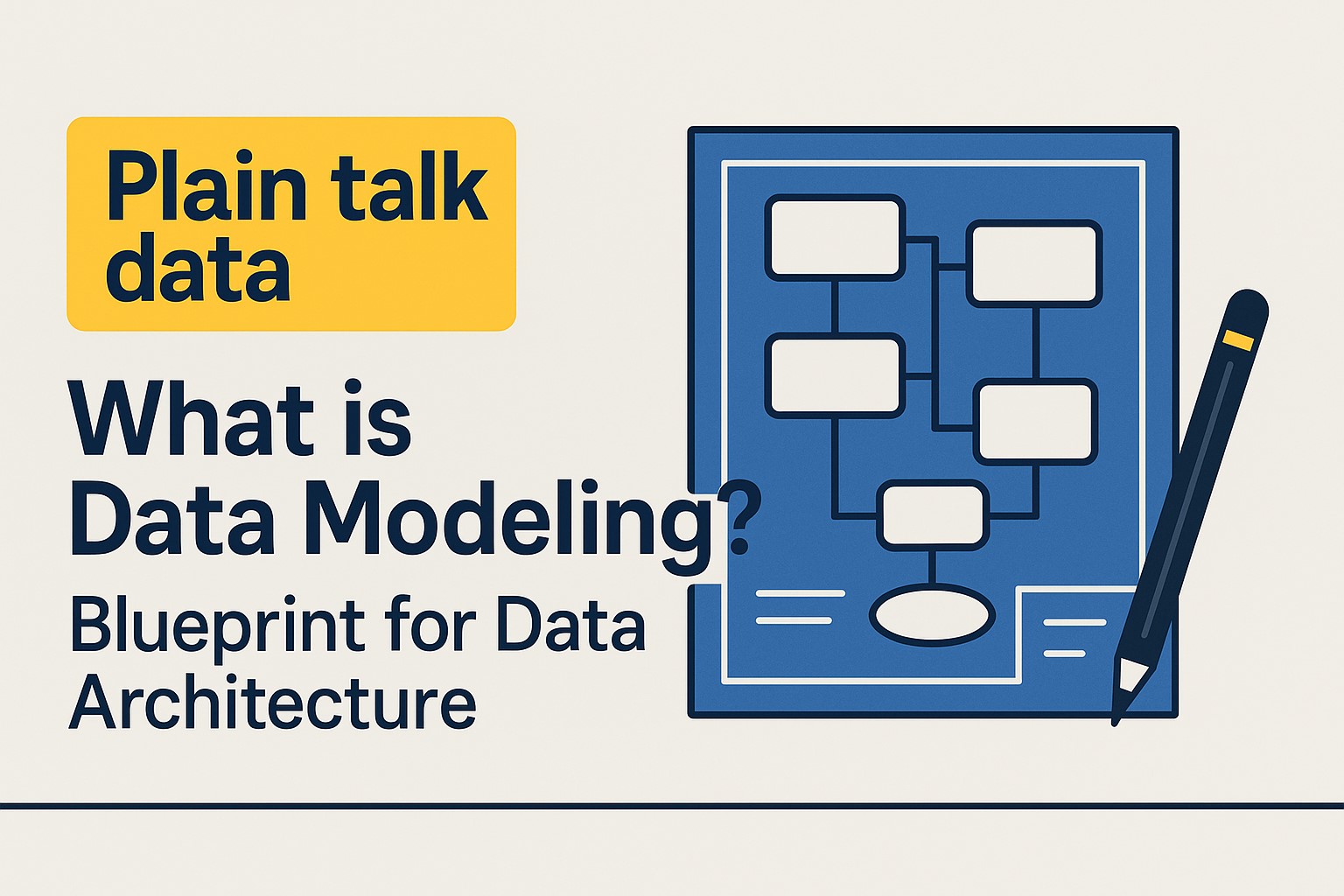Plain Talk Data: Data Modeling
A plain-English explanation of data modeling - drawing the blueprint before building the house. Learn how to plan your data structure effectively.
Plain Talk Data: Data Modeling
Data Modeling = “Drawing the blueprint before building the house”
You wouldn’t start hammering boards together without a blueprint, right? Data modeling is creating that blueprint, but for information instead of lumber.
Think of It Like Planning a Neighborhood
Step 1: Figure out what goes where
- “Customer info lives on Maple Street”
- “Order details live on Oak Avenue”
- “Product catalog lives on Pine Road”
- “These roads need to connect so people can get around”
Step 2: Draw the relationships
- Every house (customer) can have multiple driveways (orders)
- Each driveway connects to exactly one house
- Products can be delivered to many different houses
- Draw lines showing how everything connects
Real Example: From Chaos to Order
Instead of shoving everything into one giant Excel file
(like building a house with no rooms)
You plan it out:
- Customer table: names, emails, addresses
- Order table: what they bought, when, how much
- Product table: item names, prices, descriptions
- Connect them with “keys” (like house numbers) so you know which orders belong to which customers
Why Bother with Blueprints?
Without a plan, you end up with a data disaster
Like a house where:
- The bathroom door opens into the kitchen
- The stairs go nowhere
- You can’t find anything
- Nothing makes sense
With a good model, everything has its place and connects logically
Like a well-designed house where:
- Every room has a purpose
- Hallways connect logically
- You can find what you need quickly
- Everything flows naturally
The “Aha” Moment
It’s not about the data itself, it’s about figuring out how all the pieces fit together BEFORE you start building.
Like planning where the plumbing goes before you pour the foundation.
The Planning Questions
- What information do we need to store?
- How do these pieces relate to each other?
- What questions will people want to ask?
- How can we organize this to make sense?
Benefits of Good Modeling
- Find your stuff fast: Well-organized data is easy to query
- Avoid duplication: Each piece of information lives in one place
- Maintain consistency: Changes update everywhere automatically
- Scale gracefully: Easy to add new features without breaking existing structure
- Understand relationships: Clear connections between different data types
The Bottom Line
Good modeling = finding your stuff fast
Bad modeling = digital hoarding nightmare
Think of data modeling as the difference between:
- A well-organized library with a card catalog system
- A pile of books scattered around your garage
Both contain the same information, but only one lets you actually find what you’re looking for when you need it.
Getting Started
Before you create any tables or databases, ask yourself:
- What are the main “things” we need to track? (customers, orders, products)
- How do these things relate to each other?
- What questions will people want to ask?
- How can we organize this to make those questions easy to answer?
Start with pencil and paper - draw boxes for your main entities and lines showing how they connect. The computer part comes later.
